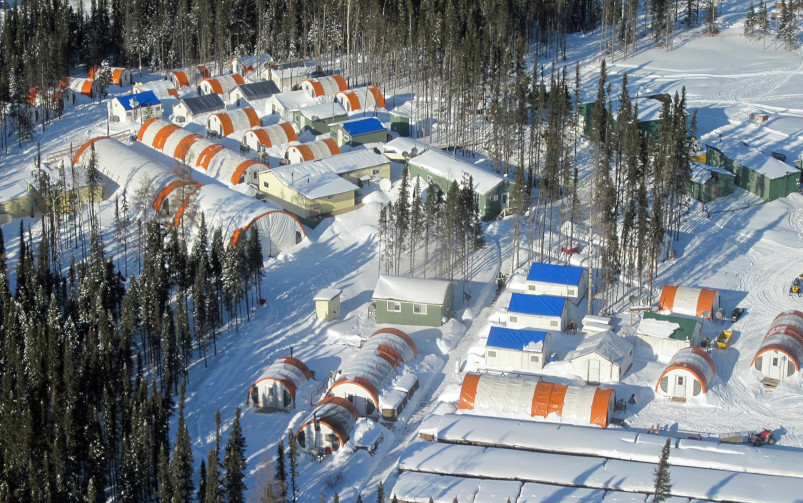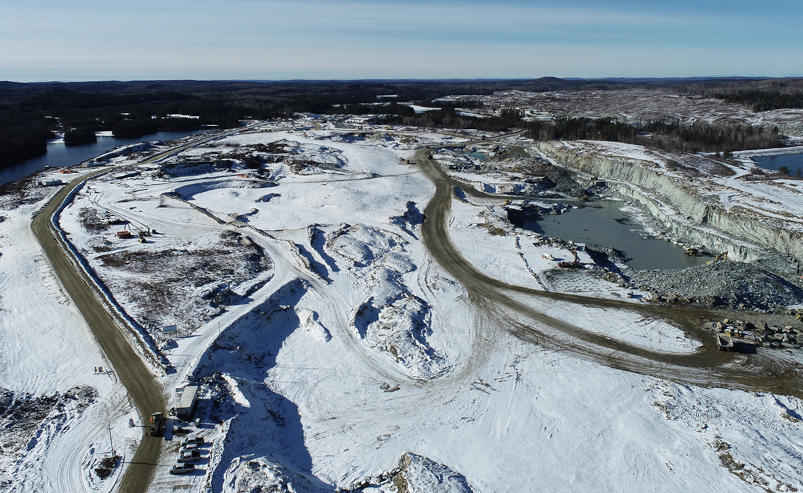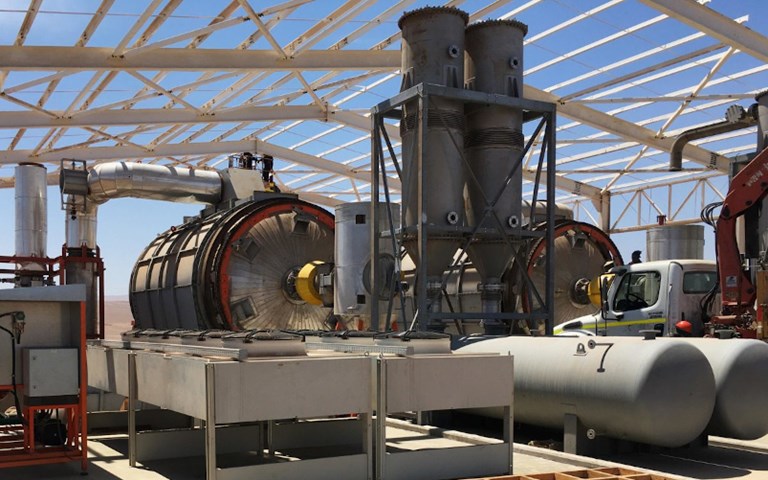Kal Tire’s thermal conversion facility in Chile has the capacity to recycle 20 tonnes of tires each day. Courtesy of Kal Tire
The federal government is supporting efforts to build a competitive green economy in Canada by investing $1.9 million towards the development of a cleantech innovation hub at the University of British Columbia’s Okanagan campus (UBCO).
The new construction will be part of the university’s proposal to create a space at its Kelowna campus called the Innovative Precinct, which will be a collection of buildings where different industries can interact with UBCO’s researchers and students. The clean technologies developed by the hub will be focused on sustainable ways to derive carbon-based materials from the mining, oil and gas industries.
“Many of these industries generate the primary product, but there are also a lot of by-products. Quite a few of the projects that we are currently working on are to see how these by-products can be used for something innovative or something new,” Lukas Bichler, UBCO’s research and industrial partnerships associate director, told CIM Magazine. “Ultimately the goal is to take the by-products and upgrade them into commodities so that you can actually sell them on the market and generate revenue for the local companies.”
Since October 2016, UBCO has had a partnership with B.C.-based commercial and mining tire retailer Kal Tire. Together, they are developing research on how to recycle end-of-life mining tires into reusable, high-quality carbon products as part of a circular economy.
“Our focus at Kal Tire remains on helping our mining customers solve that end-of-life tire problem. Because without a solution what ends up happening is that a mine will have to resort to burying tires or … tires are shredded and then sent offshore to be burnt in a cement kiln or at a fire powerplant,” said Dan Allan, senior vice-president of Kal Tire’s mining tire group in an interview with CIM Magazine.
The company uses a patented thermal conversion method to recycle its tires.
“Essentially, if you can imagine a pressure cooker, you would put the tires into a massive chamber, you raise the temperature [between 350C to up to 500C], and you leave it in there for a long time. At the end of the process, the tire rubber basically degrades,” explained Bichler.
From the degradation reaction, the tire is separated into its three recovered elements: clean, high-tensile steel that can be sold to recycling factories; heavy-duty oil with high sulfuric content that can be filtered out and used for different applications; and finally, carbon black char that Kal Tire has used as the foundation for several of its products, such as plastics, paints, toners and in rubber manufacturing.
The challenges the company faces in recycling tires extend to how to control and manage the process and determine the right logistics to make it work.
Related: Canada’s largest uranium miner acquires a minority interest in company commercializing new laser-based uranium enrichment process
Since mines are usually located in remote areas and these mining tires have about a 50-to-70-inch rim diameter and can weigh around four-and-a-half tonnes, Allan said, it can be a difficult and sometimes costly endeavour to move them to a central area where they can be cut up into pieces and then eventually placed inside a kiln for the thermal conversion to begin.
Thermal conversion is a relatively simple process and has been proven time-and-time again, added Allan. Kal Tire started working on developing methods to recycle tires after its mining customers came to the company with concerns about the difficulties of disposing end-of-life tires. Kal Tire has since opened a thermal conversion facility in Antofagasta, Chile, which is in its final phases of commissioning and is currently processing end-of-life tires, with the expected capability of recycling 20 tonnes a day.
“The challenge is what is the quality of that carbon char coming out from the process and whether it can be cleaned to a reasonable level to have it be able to be used in other applications.”
“If we can increase the levels of purity of the recovered carbon black, we can actually reduce our dependence on creating new carbon black. So, from an environmental perspective, it will represent some substantial savings on environmental initiatives,” said Allan.
The market for carbon black continues to increase, but it is produced either from mining graphite or from the petrochemical industry, which can be costly or have environmental challenges. The advantage of using recycled carbon black is that it is both environmentally friendly and produced at a much lower cost.
The carbon black gained from recycling tires can be used for various applications, but at this point UBCO’s research is focusing on the uses of that carbon in batteries to power electric vehicles, since many current batteries use carbon electrodes in the battery cell now, said Bichler.
He said the hub will finally provide the city of Kelowna access to a physical infrastructure with state-of-the-art equipment and instruments that has always been missing in the area. Bichler hopes it will help grow the university’s connections with the community, industrial partners and with local small and medium enterprises, who now have access to research and development facilities and students that they otherwise did not have before.
“So, there are a couple of benefits and ultimately at the end of the day, it is also to help with environmental concerns, which are there today and will be there tomorrow and for many decades to come, so I think [this cleantech hub] is a step in the right direction,” said Bichler.
Construction at the innovation hub at UBCO should be completed so the facility can open by summer 2021. Approximately 50 students will be hired and trained over the next three years to conduct research, work and interact with the various companies that will be using the facility in the future.




